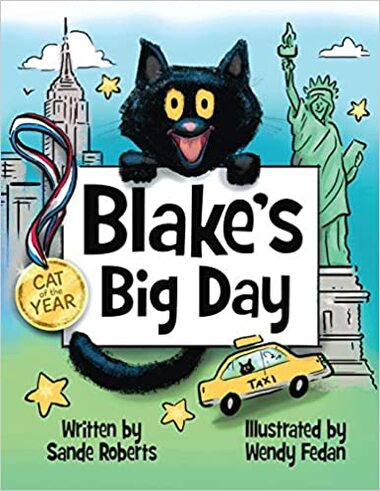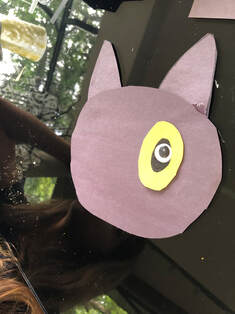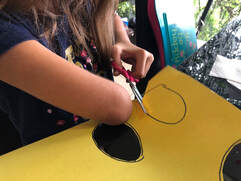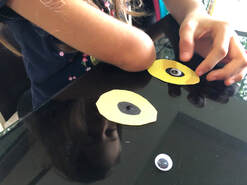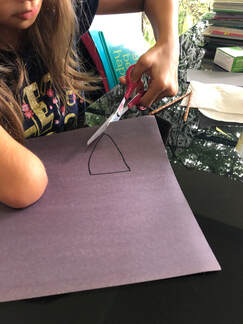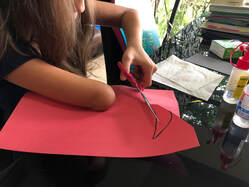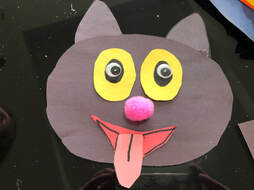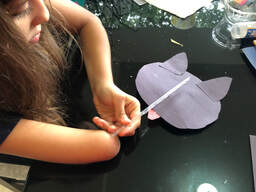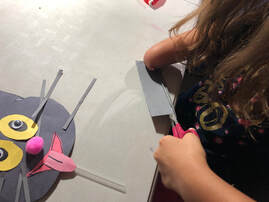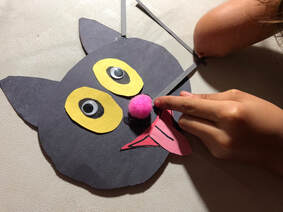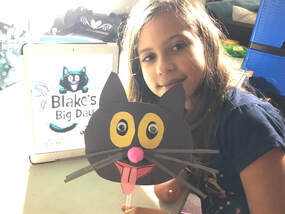A Book Review of Blake's Big Day
Blake, the other character in the book, is Glen's cat. Blake is a smart and caring cat. Blake was born into a situation where he was not well cared for or fed properly. The place where he lived was dirty and full of other cats that were also uncared for. Glen adopted Blake after he was rescued from this bad situation and brought to a shelter. Others were not interested in adopting Blake because he was small and looked unhealthy. However, Glen looked past his appearance, and immediately saw Blake's potential. Glen did not judge Blake based on his history. Blake did not judge Glen based on his disabilities. They immediately developed a strong connection.
There are big lessons in this book that we can learn from Glen and Blake. People with disabilities are NOT their disabilities. People with difficult histories or from poverty are NOT their histories. Regardless of any of those things, we all have our own set of gifts and talents and can contribute to the world in big ways. We are all worthy, deserve respect and should be included in the world and not shunned. To obtain a world where everyone is treated fairly and respectfully, we need to be exposed to things and taught from a young age. That is where this book comes in! In addition to the great story, this book exposes kids to a person with a disability and a cat that comes from poverty and a difficult beginning in life. This gives kids a window into the lives of these characters, normalizes their situations as part of our world, and helps them develop empathy. Reading diverse stories, watching diverse movies, and having diversity in your life, can go a long way to decrease stigma in our society, It is not only awareness that is important, but acceptance and tolerance to others who are different from ourselves. The key is to normalize the differences in human beings at a young age, whether it be due to skin color, gender identity, cultural differences, economic situation or disability. This will help with one's possible fear of others, with bullying, and encourage kids to stand up for others who are being treated unfairly. Seeing people with disabilities can be scary and uncomfortable for kids sometimes. Kids are naturally curious and will often ask questions. This is normal and should not be discouraged. However, the more preparation they have had for the real world of all different kinds of people, the less uncomfortable they will be. Some disabilities can be seen and others are hidden. For example, you would not know by looking at Glen, that he has seizures. However, if a child witnesses a seizure by another person, it can be scary. Again, preparation is key. This book can help start the conversation about seizures, and is especially important if a child has seizures or has a family member/friend that has epilepsy or is prone to seizures. In the book, Glen has a seizure, which is very scary for Blake, who does not know what to do. After some trial and error, Blake finds something that helps (licking his toes!) and Glen comes out of the seizure. Blake was empathic toward Glen and did what he could to help. He also sees Glen as a functioning human being and respects him for the gifts he has. Blake is a model for all of us! Wendy Fedan, the illustrator of this book, has displayed her talents throughout. Glen and Blake are beautifully illustrated and inviting characters. The art is fun and colorful and clearly shows the loving connection between Glen and Blake. I have attached a child-friendly training video about seizures below to take the exposure from the book a bit further. It is probably not a good idea for a child to lick the toes of someone having a seizure, as Blake did! So, this excellent video, by the American Epilepsy Foundation, can help them understand seizures and learn how to respond. The lesson that I took from the book is that Glen and Blake are both worthy. Their disabilities and tough start on life do not define them. The ironic thing is that due to Glen's strengths, Blake was saved. And, due to Blake's strengths, Glen was saved. We all have talents that are valuable to others, disability or not. So, when in a situation where you have contact with someone different from yourself, whether due to skin color, disability or whatever reason, think to yourself "WHAT WOULD BLAKE DO?" and act accordingly (without licking their toes!). If you are interested in purchasing this book, it is available on Amazon HERE. Below is the video and I have provided an activity idea to go along with this adorable book. Activity Idea for Blake's Big Day
Discuss the strengths and differences of the characters in the book with the child. Address how they treated each other and why Blake was considered a hero. Discuss examples of differences that others may have from them, ie. skin color, economic status, hidden differences. Then, have a discussion about human beings being different from each other, but that nobody is better or worse than another person. We can be different but all are still human (Well, except Blake!) and we all have our strengths. Try to think of someone from the child's life who is a person with a disability and brainstorm their strengths.
Materials Needed: -Black, yellow, grey and pink construction paper -scissors -black marker -strong glue -craft stick or straw -googly eyes (optional) -pink craft pompom (optional)
2 Comments
|
Follow me on Twitter, Pinterest and LinkedIn
Categories
All
|
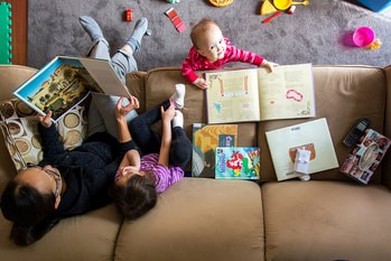
 RSS Feed
RSS Feed
